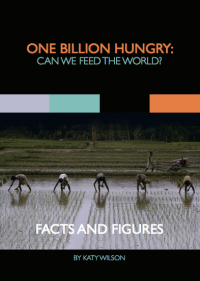This week’s summary on the news stories, reports and blogs that have grabbed our attention. We welcome your thoughts and comments on these articles.
Roadmap for Strengthening Forest and Farm Producer Organizations, FAO
Six innovations revolutionising farming, The Guardian
Could insects feed the hungry world of tomorrow?, BBC
Beating the heat, Nature Biotechnology
Crop yields and global food security, Australian Government (GRDC)
Acres of genetically modified corn nearly doubled in a decade, Harvest Public Media
What’s the best way to measure empowerment?, Duncan Green, Oxfam
Majority of African Farm Workers Struggle to Afford Food, Gallup
Wild about Agricultural Innovation in Botswana, Global Food for Thought
Pesticide blamed for bee deaths now linked to bird declines, Los Angeles Times
Food Security and WTO Domestic Support Disciplines post-Bali, ICTSD
Why does Europe hate genetically modified food?, Rappler
Can Africa create a new green generation of food producers?, Thomson Reuters Foundation
Higher Food Prices Can Help to End Hunger, Malnutrition and Food Waste, IPS











